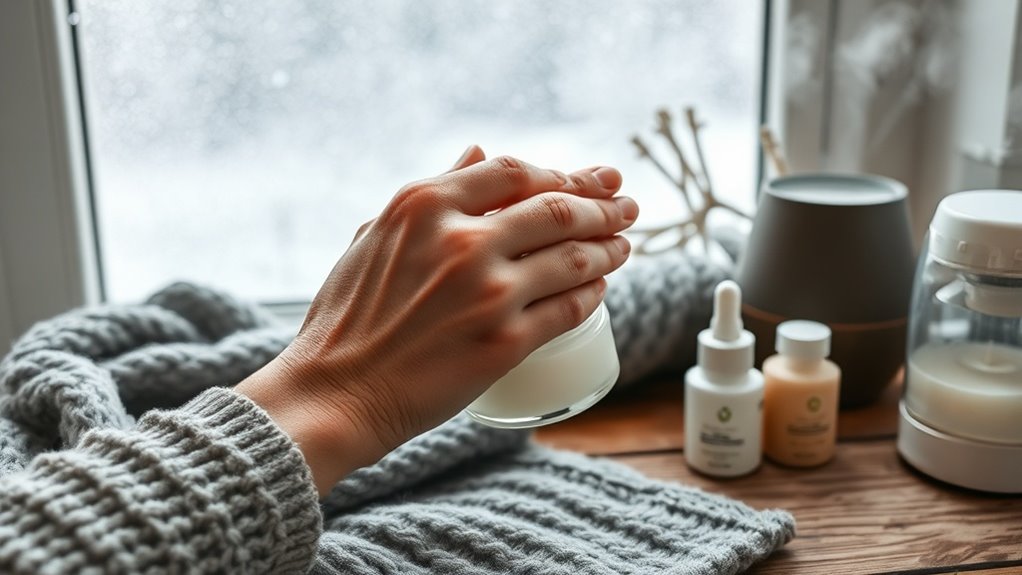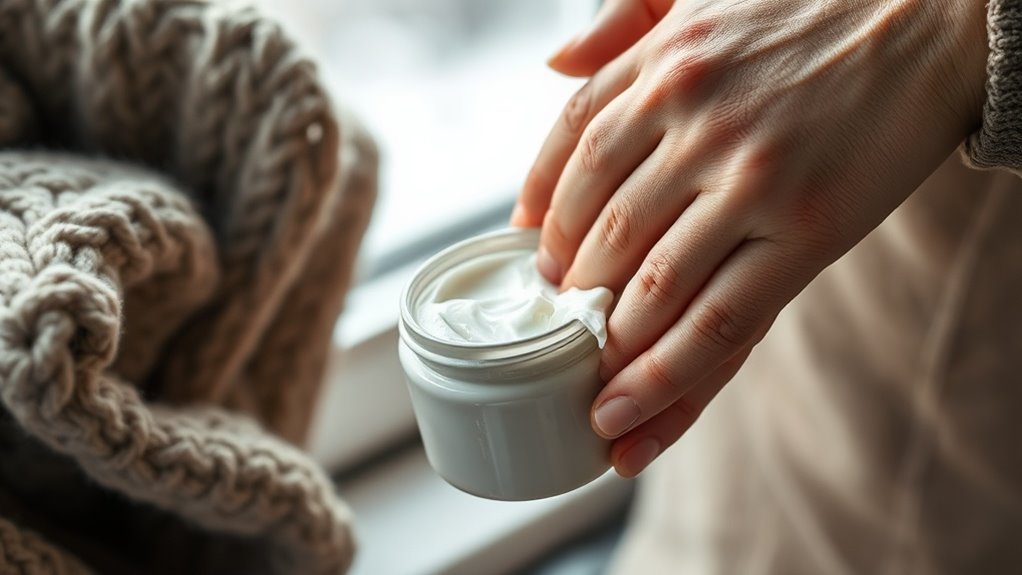Natural Knee Pain Relief Remedies That Work
You can effectively manage knee pain through several natural approaches. Start with gentle exercises like hamstring stretches and straight leg raises to build joint support. Apply hot and cold therapy in 15-minute intervals to reduce inflammation and improve circulation. Include anti-inflammatory foods like salmon and turmeric in your diet, and consider glucosamine supplements. These evidence-based remedies work best when combined into a comprehensive treatment strategy that addresses both immediate relief and long-term prevention.
Understanding Common Causes of Knee Pain
When experiencing knee pain, identifying the underlying cause is essential for effective treatment.
Common causes include osteoarthritis, rheumatoid arthritis, tendinitis, and bursitis. You’ll also find injuries like ligament tears, meniscus damage, and sprains frequently contribute to knee discomfort.
Overuse from repetitive motions, obesity, and poor biomechanics can strain your knee joints. Before considering knee pain relief remedies, it’s crucial to determine if your pain stems from acute injury or chronic conditions.
Your age, activity level, and medical history play significant roles in diagnosis, helping guide the most appropriate treatment approach. Additionally, engaging in low-impact exercises can be beneficial for supporting knee joint health and alleviating pain.
Essential Stretches and Exercises for Knee Health
Regular stretching and targeted exercises form the cornerstone of knee pain management and prevention.
You’ll benefit most from hamstring stretches, quadriceps strengthening, and calf flexibility exercises. Perform straight leg raises and wall sits to build muscle support around your knee joint.
Start with gentle range-of-motion exercises, like heel slides and seated knee flexion.
Progress to weight-bearing activities such as mini squats and step-ups once you’re comfortable.
Don’t forget balance exercises – try single-leg stands to improve stability.
Always maintain proper form and stop if you experience sharp pain or swelling. Incorporating low-impact exercises into your routine can further enhance knee stability and reduce discomfort.
Powerful Anti-Inflammatory Foods and Supplements
Along with proper exercise, your diet plays a key role in managing knee pain and inflammation.
Research shows that certain foods and supplements can help reduce joint discomfort and support cartilage health.
-
Consume omega-3 rich foods like salmon, sardines, and flaxseeds daily to reduce inflammatory markers in your joints.
-
Add turmeric with black pepper to your meals, as curcumin compounds provide potent anti-inflammatory effects.
-
Supplement with glucosamine and chondroitin sulfate, which studies show can improve joint function and reduce pain when taken consistently.
These evidence-based nutritional interventions work best when combined with your overall knee health strategy.
Traditional Herbal Remedies for Joint Discomfort
Traditional medicine practitioners have long relied on specific herbs and plant compounds to address joint pain and inflammation.
Turmeric’s active compound, curcumin, demonstrates significant anti-inflammatory properties when taken as a supplement.
Ginger root contains gingerols that reduce joint inflammation and pain signals.
Boswellia serrata (frankincense) inhibits inflammatory enzymes while willow bark provides natural salicin, similar to aspirin.
For topical relief, you’ll find arnica and capsaicin effective.
Arnica reduces swelling and bruising, while capsaicin blocks pain signals.
Devil’s claw root contains harpagosides that combat inflammation and provide analgesic effects comparable to conventional medications.
Hot and Cold Therapy Techniques
Alternating between hot and cold therapy provides effective relief for knee pain through distinct physiological mechanisms.
Heat increases blood flow and relaxes tight muscles, while cold reduces inflammation and numbs pain signals.
-
Apply moist heat (heating pad or warm compress) for 15-20 minutes to improve circulation, reduce muscle tension, and increase joint flexibility.
-
Follow with cold therapy (ice pack or cold compress) for 10-15 minutes to decrease swelling and dull pain.
-
Repeat this cycle 2-3 times daily, ensuring at least 1 hour between treatments to allow tissue temperature normalization.
Natural Topical Solutions and Massage Methods
Many people find relief from knee pain through natural topical applications and targeted massage techniques that complement temperature-based treatments.
You can apply arnica gel, capsaicin cream, or eucalyptus oil directly to the affected area for their anti-inflammatory properties. Combine these with gentle circular massage strokes around the kneecap, focusing on the surrounding muscles and tendons.
For deeper relief, try trigger point massage on the quadriceps and hamstrings. Press firmly for 30 seconds on tender spots you identify.
Essential oils like peppermint or wintergreen can enhance massage effectiveness when diluted properly with a carrier oil.
Lifestyle Changes to Prevent Future Knee Pain
While medication and topical treatments can provide temporary relief, implementing strategic lifestyle modifications offers long-term protection against recurring knee pain.
-
Maintain a healthy weight through proper nutrition and portion control – every extra pound adds 4 pounds of pressure to your knee joints during normal walking activities.
-
Strengthen your leg muscles through low-impact exercises like swimming, cycling, or using an elliptical machine to provide better joint support.
-
Practice proper posture and body mechanics during daily activities, including using ergonomic furniture and wearing supportive footwear with adequate cushioning.




